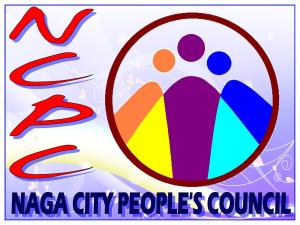NCPC HISTORY
Over the years, people empowerment and access to basic services has characterized the CSO engagement of the state, whether in the national or local levels. In the Philippines, the enactment of the Local Government Code in 1991 placed more powers in the hands of the Local Government Units while at the same time providing for avenues wherein the people can directly participate in governance.
The enactment of City Ordinance No. 95-092. “An Ordinance initiating a System for a Partnership in Local Governance between the City Government and the People of Naga”, otherwise known as the Empowerment Ordinance of Naga City, lent legitimacy to the organization of the NGO/PO community in Naga City, which has long been operating and involved in various government programs and activities as Naga City NGO/PO Council. In May 1996, the organization transformed itself into the Naga City People’s Council or NCPC, a city-based NGO/PO mechanism which concretizes the spirit of people’s participation and advances the principle of partnership in local governance by the local government. The council is a non-partisan, non-sectarian, non-stock, and non-profit association of NGOs and POs in Naga City.
NCPC’s recognition and acknowledgement by government firmed up two things: 1) NCPC resolve to commit to local development and people empowerment through participation of the basic sectors in the various streams and avenues of local governance and 2) to actualize local development and people empowerment through enjoining people’s participation in local development processes.
The ordinance widened the areas for people participation and bestowed powers upon NCPC to send representatives to all the City’s committees, councils, boards and task forces and there participate in the deliberation, conceptualization and implementation and evaluation of the City’s projects and activities. NCPC may also propose legislation and participate and vote at the committee level of the local legislative council. These provisions for direct people’ participation was maximized NCPC to bring about reforms and to make service delivery more responsive to the needs of the people.
NCPC worked hard to make both the people and the government ready for partnership. While implementing capability-building programs for its members, NCPC also reached out to the local officials in order for them to appreciate people’s participation in governance. Representatives from the different sectors were mobilized in 2001 for the NCPC Sectoral Congress where the where the different sectors identified their development agenda in pursuit of each sector’s vision.
Alongside the partnership, NCPC maintained its role as a critic of the government in issues that it finds detrimental to the cause of the CSOs. The promotion of the agenda of the sectors were done within and outside of formal avenues offered by the government bodies. The engagement of NCPC in partnership with the city government institutionalized people’s participation in the governance affairs of the city. More than the mandated partnership under the Empowerment Ordinance, both NCPC and the city government maximized the opportunities available for participation.
NCPC’s experience in partnering with the city government provides important insights for civil society groups and local government units. While the experience of NCPC may not serve as an exact blueprint in moving towards and making the partnership work for both partners, it however introduces the systems and processes that needs to be in placed to make the partnership work. It also shows that engaging the government in a partnership undertaking uses less of CSOs energies and resources and, at times, yields better result than traditional modes of engagement.
To date, NCPC is composed of 90 members classified into thirteen (14) sectors namely, the Urban Poor, Youth and Children, Business, Labor, Senior Citizen, Women, Persons with Disabilities, Peasant, Transport, Barangay People’s Council, Education, Civic, Professionals and Enthusiasts, and NGO sectors. The fifteen (15) Board of Directors which is the representative of the thirteen (14) sectors is the highest policy making body of the council.
VISION and MISSION
THE NAGA CITY PEOPLE’S COUNCIL
Envisions…
… Naga City as a happy home to every Nagueño
… Where every constituent respects the dignity of a person, are disciplined, gender-sensitive, God loving and discerning;
… Where everyone have access to economic opportunities and social services;
… Where every household live in descent condition;
… Where there is industrial peace;
… Where agricultural communities are maintained Sustainable
… Where environment is protected and nurtured; &
… Where there is sincere cooperation between civil society and the LGU.
… Itself to become a city-based NGO/PO Council
… Where all NGOs/POs and the private sector are affiliate with;
… Where every member, in particular, in the network, in general, as a whole are:
Active
Efficient
Strong
Effective
Mature
… And, enjoys acceptance, recognition and respect of the LGU of the
City of Naga.
MISSION:
- to create, articulate and realize our vision for the country and local communities through the forging and implementation of policies, strategies and programs of action towards sustainable and equitable development;
- to enter into partnership in the local governance with the city government of Naga and other willing local units preferably within the Bicol Region;
- to intensify barangay socio-economic development through development approach and full mobilization and maximum development of available resources it may tap or generate;
- to fortify commitment towards social responsibility, progressive local governance and dynamic developmental technology and balanced rural-urban growth;
- to provide venue for developmental education through the sponsorship of training programs, seminars, workshops and other activities that facilitate the achievement of these objectives;
- to facilitate the creation of mechanism and structures that will ensure people participation in local governance;
- to establish social enterprise to finance the realization of the objectives stated above; and
- secure social financing to provide capital for the enterprise stated in letter g.


can i have a contact to the chairman or the secretariat of NCPC? get.movement@yahoo.com
u can address ur concern to:
RAMIRO I. SAMAR
chairperson
naga city people’s council (NCPC)
naga city coliseum, brgy. triangulo, Naga City
(054) 6214382
ncpc_naga@yahoo.com